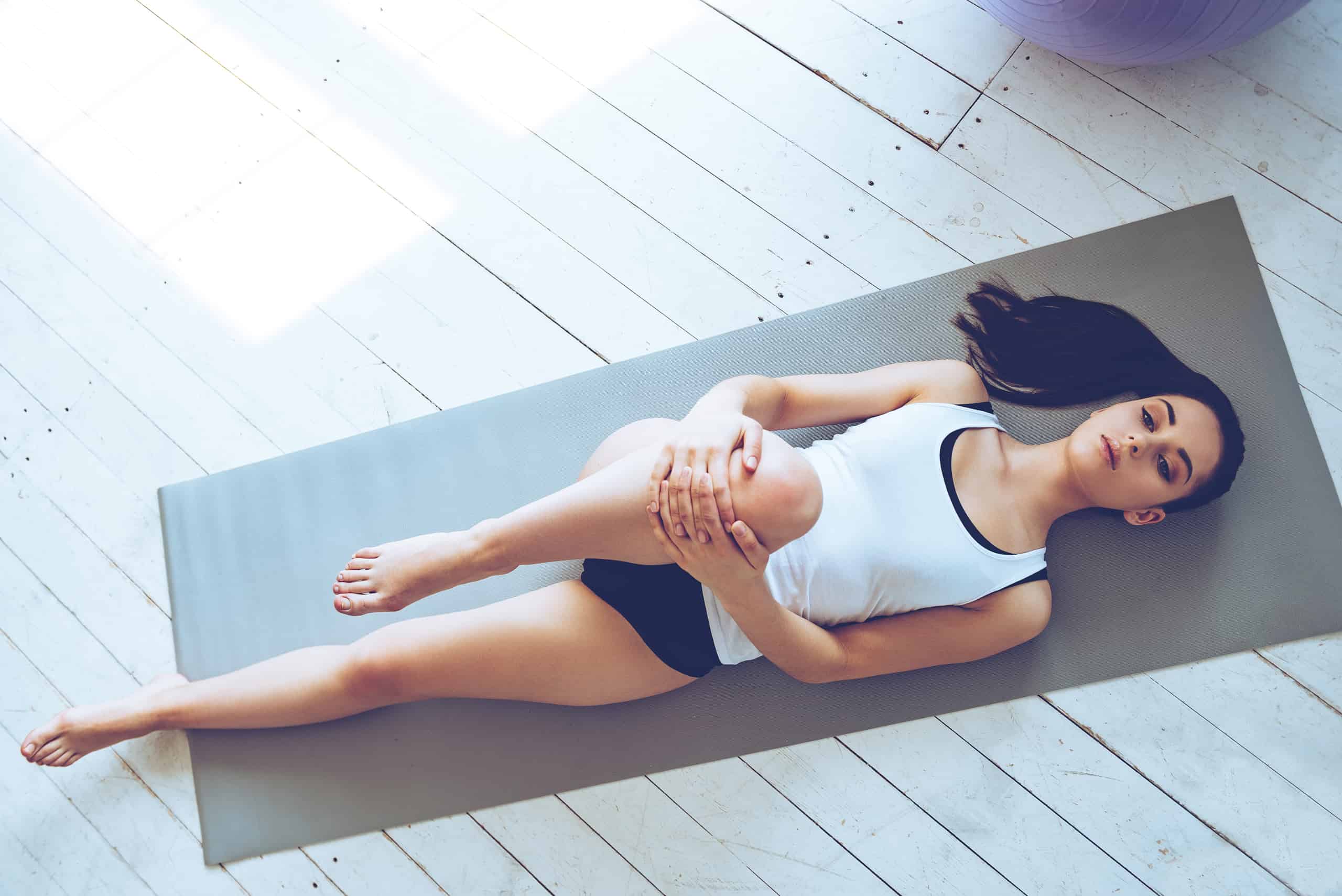Introduction
Do you suffer from back pain? Pilates can be a great help! It strengthens your core muscles and helps your posture, which reduces strain on your back. Knowledge is key to getting relief from Pilates. Here’s the basics of how to properly do these exercises:
What is Pilates?
Pilates is an exercise system created by Josef Pilates. It focuses on strengthening the core and improving flexibility, posture and muscle tone. It is an active form of exercise that requires proper alignment and breathing.
The main benefit of Pilates is improved postural awareness. Poor posture can cause back pain and strain on the back muscles. With Pilates, individuals can learn how to use the correct muscles for postural support and core stabilization. This helps reduce back pain and improve overall health.
Exercises in Pilates vary due to the person’s needs. They range from neutral spine movements to more challenging positions. Examples of exercises are:
- The Hundred
- Single-Leg circles
- Teaser
Benefits of Pilates for back pain relief
Pilates is a safe, low impact exercise. It brings relief from back pain – short term and long term. This method combines stretches and strength exercises. It helps with muscle balance, flexibility, posture and coordination. It can also make your core stronger.
Anyone can do Pilates – from beginners to advanced. It engages the whole body, creating overall strength and agility. It strengthens the core muscles, helping the spine. It also improves your posture.
Pilates isn’t just about strength – it’s about awareness and breathing. It teaches you to concentrate on each movement with precision. It makes you aware of any movement patterns that cause tension in the neck or lower back. Breathing also reduces stress, helping to reduce chronic pain symptoms.
Pilates Exercises for Back Pain Relief
Pilates is amazing for relieving lower back pain. It strengthens your core and spine, boosts flexibility, posture, and balance. Pilates can help by stretching your spine and gently building up the muscles around it.
Here are the key exercises used in Pilates to ease back pain:
Cat-Cow Stretch
Do the Cat-Cow Stretch! It’s a Pilates exercise that lengthens and strengthens your torso, and helps reduce tension in your back and neck.
- Start with hands under your shoulders, and knees under your hips. Root yourself evenly into the ground and keep your spine in a neutral position.
- As you exhale, draw your core in and round your shoulders forward. Drop your head towards your chest. Keep your stomach muscles engaged.
- When you inhale, arch your back, dropping your head back and elongating your neck. Feel free to move from side to side and add twists if it feels comfortable. Explore how each movement opens up different areas of tension.
- Do 10 reps at a comfortable pace. Focus on good posture – rounding when deepening Cat and elongating your spine when reaching Cow. Increase repetitions gradually over time.
Single-Leg Stretch
The Single-Leg Stretch is a Pilates exercise. It strengthens the abdominal and paraspinal muscles. It also helps with posture and mobility. It can provide relief from chronic back pain.
Start by lying on your back with your legs bent at a 90-degree angle. Curl up while lifting both legs towards the ceiling. Alternate stretching one leg away from you. Grip with the abdominals and press both heels away from you. Hold for 5 seconds. Repeat 8–10 times.
This exercise helps support abdominal strength and spinal stability. It can reduce pain from sciatica or herniated discs. To increase difficulty, add small variations. For example, extend one arm overhead or use resistance bands.
Spine Stretch
The Spine Stretch is a great Pilates exercise for back pain. It strengthens your spinal muscles and relieves tension.
Start by standing with feet hip distance apart, toes facing forward, and arms at shoulder height. Reach down and around your legs, like you’re hugging yourself from behind. Go as far as possible and hold the stretch.
Hold this position for a few breaths and knead any tight spots with both hands. Slowly roll up to standing and repeat 2-3 times. Increase the intensity by reaching longer each time.
Never force or push through pain. Spine Stretch should feel good and relaxed. With regular practice and guidance, it will help with acute or chronic back pain.
Knee-to-Chest Stretch
The knee-to-chest stretch is a Pilates move to reduce lower back pain. To do it, lie on your back with feet hip-width apart. Bend one knee towards your chest. Place both hands underneath your thigh and use arms to hold it in place. Lift the other leg and hold the ankle in a gentle grip. Draw it towards your chest, aiming to keep legs parallel. Increase or decrease intensity by resting calf across other leg in a figure four. Hold for up to one minute. Then switch legs and release slowly while exhaling.
Pelvic Tilts
Pelvic tilts are great for relieving back pain and increasing core flexibility. The goal is to stabilize and draw the pelvis towards the spine. Maintaining good form is key!
Stand with feet shoulder-width apart, knees slightly bent, and toes pointed out. Draw your navel in, clench abs, and arch your lower back.
Next, tilt your pelvis backwards until you feel a slight pull in the lower abdomen. This is known as posterior pelvic tilt. Hold for 5 seconds, release, and repeat 10-15 times.
Now focus on anterior (forward) pelvic tilt. Draw your navel in, tuck your tailbone inward, and engage your deep core muscles. Hold for 5 seconds, release, and repeat 10-15 times.
Be mindful of pressure on deeper muscles when performing pelvic tilts. Support good posture and work through each rep with full range of motion. Don’t overdo it, as it might strain neck, shoulders, or hips. Proper form is must!
Safety Precautions
Pilates safety is key! Ensure an injury-free workout by understanding its safety precautions. Proper form and body alignment are essential. Know the fundamentals of Pilates and the alignment of your spine as you move. Here are key points to remember for utmost safety:
- Understand Pilates safety.
- Use proper form and body alignment.
- Familiarize yourself with Pilates fundamentals.
- Always be mindful of spine alignment.
Warm-up and cool-down
A Pilates session should always begin and end with a warm-up and cool-down. The warm-up should start off with low intensity exercises that involve dynamic movement. This gradually increases the intensity. For instance, stretching, calisthenics, core exercises, light cardio, and balance training. This prepares your body for the workout, stimulating your nervous system and increasing blood flow to the muscles.
Cooling down should involve slower and gentler movements, such as stretching. This helps decrease fatigue and restore regular circulation to your muscles. Adding deep breathing helps stabilize your heart rate, restore balance, and reduce stress in the body while calming your mind.
Proper form and alignment
When practicing Pilates, pay attention to your form and alignment. Ensure you benefit from the exercise and steer clear of injury. Relax yet focus your mind. Keep muscles firm and joints loose. Concentrate on the natural curvature of your spine.
Move through a full range of motion that works for your body. Start slowly with few reps and little force, as you get used to the methods. With practice, become comfortable with the foundations. Advance at a gradual pace for optimal safety and fitness benefits. This can bring strength, control, coordination and flexibility, reducing back pain or discomfort.
Listen to your body
It’s important to pay attention to your body when you’re doing Pilates. This type of workout involves stretching, strengthening and sometimes even aerobic exercises. If done right, these activities can help with back pain relief. But if done wrong, they can make your pain worse.
So stay mindful during your Pilates practice. Notice any areas of discomfort or tightness. Don’t push yourself too hard. Pilates should support a healthy lifestyle, not add stress or discomfort. It should help relieve tension and ease any pain you may have in your lower back.
Conclusion
To sum up, Pilates can be a fabulous aid for lower backache relief. It can help recover movement and vigor. Furthermore, Pilates can boost your core power and balance. Adhere to the fundamental rules and comprehend the right form and you will be able to reach a suitable Pilates practice level for back pain relief.
Summary of the benefits of Pilates for back pain relief
Pilates is an effective way to reduce lower and upper back pain. It increases mobility, builds strength and increases flexibility. Workshops, classes or individual sessions are beneficial for people of all levels. Pilates can reduce chronic discomfort and improve posture and wellbeing.
It also improves proprioception. This is awareness of body parts in relation to the rest of the body. It helps to develop a sense of self-awareness. The non-impact system allows people to progress without risk of injury.
Special equipment, like the Reformer-based machine, is used. This enables isolated muscle group work with light weights or full body movements. Core stability increases and this reduces joint tissue damage due to poor alignment.
Regular Pilates will improve physical strength and function. This should reduce the amount of pain from lower/upper back problems.
Tips for getting the most out of your Pilates practice
Establish a regular schedule and stick with it to get the most out of Pilates. It requires commitment and consistency for therapeutic benefit. Attend each session and warm up/cool down. Also, focus on controlling movements to develop skillful patterns. Take time between sets to check in with your body.
Breathing is key: it allows control, connection with yourself, improved posture, balance, etc. Variations should be acknowledged as well – listen to your body and don’t take excessive risks while preserving alignment.
Frequently Asked Questions
Q: What is Pilates?
A: Pilates is a form of physical exercise that focuses on developing strong, balanced and flexible muscles, as well as improving posture, breathing, mental focus and overall well-being.
Q: Can Pilates help with back pain relief?
A: Yes, Pilates is an excellent form of exercise for people with back pain. It can help alleviate pain, improve flexibility, strengthen the core muscles that support the spine, and promote better alignment and balance.
Q: Do I need any special equipment to do Pilates?
A: While there are specialized Pilates machines and equipment, you can also do Pilates exercises at home using just a mat or towel. Some exercises may require small props such as resistance bands or balls, but they are not essential.
Q: Can anyone do Pilates, regardless of their fitness level?
A: Yes, Pilates is a low-impact form of exercise that can be adapted to all fitness levels and abilities. It is also suitable for people recovering from injuries or with chronic conditions, as long as they consult their doctor before starting a new exercise program.
Q: How often should I do Pilates to see results?
A: The frequency and duration of Pilates sessions depend on your personal goals, fitness level, and availability. As a general rule, it is recommended to do Pilates at least two to three times a week for maximum benefits.
Q: Can Pilates improve my overall fitness and well-being?
A: Yes, Pilates can improve not only your physical fitness but also your mental and emotional well-being. It can enhance your body awareness, boost your self-confidence, reduce stress and anxiety, and promote relaxation and better sleep.









